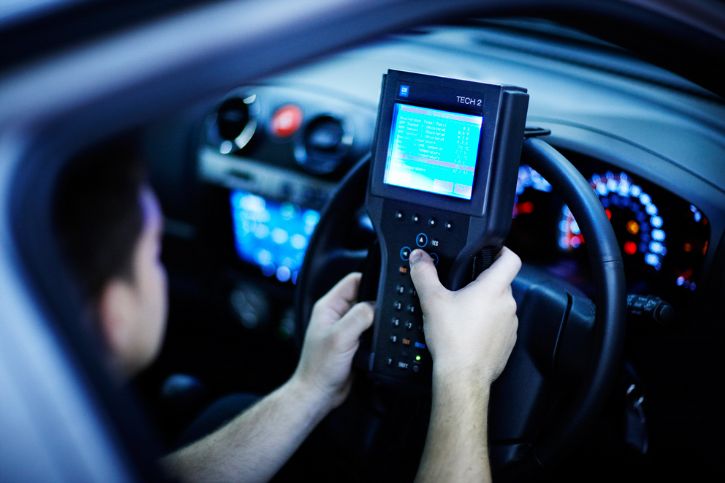Warning lights / and diagnostics
So theres somethink not quite right about the way your vehicle is driving or you have a warning light on your dashboard
What do you do? Hint: the answer is not to put a piece of electrical tape over the warning light and ignore it.
What makes a warning light come on?
Today's vehicles are manufactured with complex inter-related systems. On-board computers continuously monitor and store information concerning the performance of these systems. A warning light comes on because the computer has sensed a signal from one of the systems or components that has gone outside of its normal operating range. The computer then sends a signal to turn on the light to let you know something is wrong!

Some of the potential causes for a check warning light are not properly tightening your gas cap to engine, transmission or braking system performance issues. While warning lights can go on and the car still appears to be driving "fine", ignoring some lights can lead to serious issues, such as engine damage or other component failure. In some instances, this can be a safety hazard. That's why it is recommended to be safe (give yourself peace of mind) and have your car looked at by a certified professional as soon as possible.
How can Road Runner "diagnose" my problem?
At Road Runner, we have the tools, training and technology to handle diagnostic issues, such as a Check Engine light. Properly performing a complete diagnostic procedure normally includes the following steps:
1. RETRIEVE DATA - A full functioning scan tool is used to perform an onboard computer system analysis in order to retrieve the following:
- Computer codes
- Freeze frame data
- Computer software version numbers
- Critical sensor data and status information

Note.merely"pulling codes" does not generally provide enough information to make an accurate diagnosis of the problem.
Pulling codes is the initial step in the process by identifying the circuit or system that has illuminated the vehicle’s check engine light.
2. VERIFICATION TESTING - Verification tests determine if systems meet proper specifications. These tests may include an analysis of:
- Engine vacuum and backpressure
- Mechanical and electrical engine timing
- Ignition system
- Fuel system
- Emissions system
NOTE: Failure in any of these basic systems can cause the check engine light to illuminate and falsely identify a circuit or component as the problem, which could lead to improper or unnecessary parts replacement.
3. PINPOINT TESTING - All manufacturers require that circuit or component pinpoint testing is done in order to make an absolute diagnostic determination. These actions involve:
- Working through wiring diagrams
- Performing electrical and/or mechanical tests
- Performing bi-directional control tests
- Visual inspections of suspect areas
4. RESEARCH TECHNICAL SERVICE BULLETINS - Technical Service Bulletins and hotline information will indicate if the problem has been determined to be a pattern failure, meaning that it is a known issue that occurs with a particular type of vehicle. This does not eliminate the need for testing, as other systems must meet specifications before a service bulletin procedure should be performed.
5. CAR REPAIR - This may involve multiple actions such as:
- Parts replacement
- Cleaning of parts and eletrical connectors
- Performing manufacturer technical service bulletin updates
- Updating of vehicle’s computer software
- Wiring repair or replacement
-
6. VERIFY REPAIR - Once all necessary actions have been taken, the vehicle must be retested to verify that the repair is complete and has achieved the proper results.
How long will it take to diagnose my problem?
In most cases, we can actually find AND fix the problem in the same day
